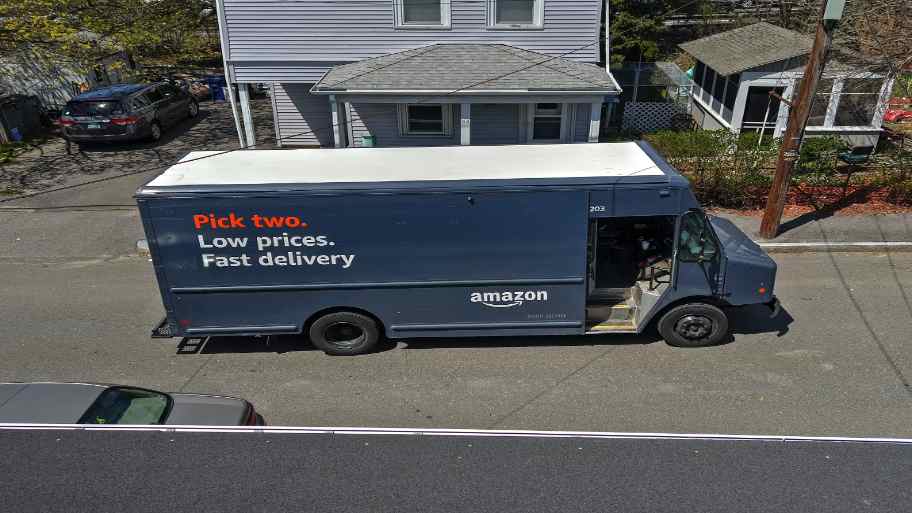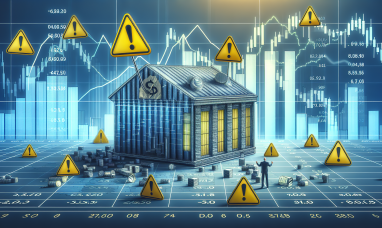Since its high point in November 2021, Amazon (NASDAQ:AMZN) stock has been decreasing steadily. This year, it has done about three times worse than the overall market.
Is it possible that by 2023, the story will be different? Here are some fundamental and technical things you might want to think about.
Why Did It Go Wrong?
You can look at Amazon’s problems from different angles, but if investors want to believe in this story again, the company must first show that it can make money in the same way it used to.
The company made a lot of positive FCF each quarter for most of the last ten years. At one point, it even made more than $15 billion. However, FCF has been mostly negative lately, except for Q4-21.
The problem is made worse by the fact that the company’s finances have gotten worse. The ratio of financial debt to EBITDA has reached its highest level in a decade.
When investors are risk-averse, and a company has negative cash flows and more debt, they are less likely to pay the high valuation multiples that Amazon stock requires. Also, this is not a company that pays a dividend to compensate for losses, which could help ease the pain.
When it comes to cash flow, there are a few things to think about. For one thing, the rate at which sales are turned into operating cash flow has slowed down recently. The average number of these conversions was in the double digits in the past, but they are now at their lowest level in the last five years.
Where did this come from? As a starting point, they’ve not done a good job of controlling variable costs per unit. At the same time, fixed costs have gone up, but there needs to be more growth in revenue to make up for the investments in fixed costs. Operating margins used to be about 5% per quarter on average, but now they are less than 2%.
Working capital has been going in the wrong direction, and operating profits have been down. Amazon has always been in a good position in this way because its receivables and inventories come in at a slower rate than its payables. While Amazon continues to benefit from a negative cash conversion cycle, it has recently moved away from the long-term average.
A lot of money has been put into network infrastructure, which has slowed down the FCF. After the pandemic, Amazon’s management overestimated how hungry the market was and put too much money into their networks, which have since doubled in size. Before the pandemic, the fixed asset turnover ratio was closer to 4x. Now, it is just over 2x, about half of what it was.
What’s the Outlook for Amazon?
Mistakes have been made, but the company knows this and is working to make things right.
First, the total amount of CAPEX planned for the year has been cut by one-third from what was first planned. The amount that will be spent on things like the fulfilment network and transportation will drop by $10 billion. Even though AWS investments may continue to put pressure on cash flow, the overall CAPEX number in FY23 is going up, even though the company is focusing on using its high fixed cost base to its advantage and increasing usage.
The CFO also discussed getting the “cost structure back to pre-pandemic levels.” If that happens, operating margins should be in a good position to return to their long-term average. Around the middle of November, there were rumours that Amazon would lay off 10,000 workers. However, recent reports say this number could be closer to 20,000, which should improve per-employee metrics because this could be more than 10% of the corporate staff. Also, in Q3, Amazon had already cut costs and increased productivity by $1 billion. This will keep improving, as management said they “expect to see further improvement in the coming quarters” and “came in $0.5 billion short.” In other words, Amazon can make another $1.5 billion in productivity gains in the second and third quarters.
Working capital is also likely to add to operating cash flows more positively since the company already has a lot of inventory and doesn’t need to buy much more. As the cash conversion cycle returns to historical levels, the amount of OCF should go up.
What Technicals Are Telling Us
Between 2019 and 2020, the stock price stayed between $80 and $100 for a long time. When the pandemic ended, a breakout ended in a bullish flag. The stock tried twice, in July 2021 and November 2021, to break out of this bullish flag, but made a bearish double-top around the $188 level.
Since then, the price has been decreasing, and the flag pattern broke down in April of this year. The stock then made an encouraging rounding bottom and was making up for the drop below $150, but this did not last. After that, we saw a long leg down again.
Most of the candles in the last 17 weeks have been big and red, so the current move seems one-dimensional. We might see less selling and more consolidation in the old congestion zone for 2019 of $80 to $100.
What makes a case for a possible bottom more robust is that the stock no longer looks too far up compared to its Nasdaq peers and the retail industry. In recent months, this theme of mean reversion to the downside has played out, which was unthinkable just a few years ago. The stock is now trading slightly below the midpoint of its long-term range compared to the Nasdaq and the VanEck Vectors Retail ETF.
Should You Buy Amazon Stock, Sell it, or Keep it?
Amazon still has some things to fix, but at this price, you have to wonder if many of the risks have already been taken into account.
In the last three months, estimates for EPS in December 2023 have been cut by 25% from what they were before. Estimates for revenue in the same year have been cut by 6% from what they were before.
Given the high denominator cuts, you might think that forward P/E valuations are pretty expensive, but there has been so much selling that the P/E looks very cheap. More specifically, the stock’s current forward P/E (based on FY23 numbers) is only a hair’s breadth away from the lower end of its 5-year forward P/E range of 49.86-98.63 and is 32% cheaper than the average 5-year forward P/E of 74.61x.
To sum up, I don’t think the downside risks are as significant as they were a few months ago, and the stock may form a base around the current zone. This could give investors some interesting chances to buy into Amazon. Also, forward valuations are already low compared to the average of the past 100 years. Amazon is a stock to buy.
Featured Image – Pexels © James Anthony

















